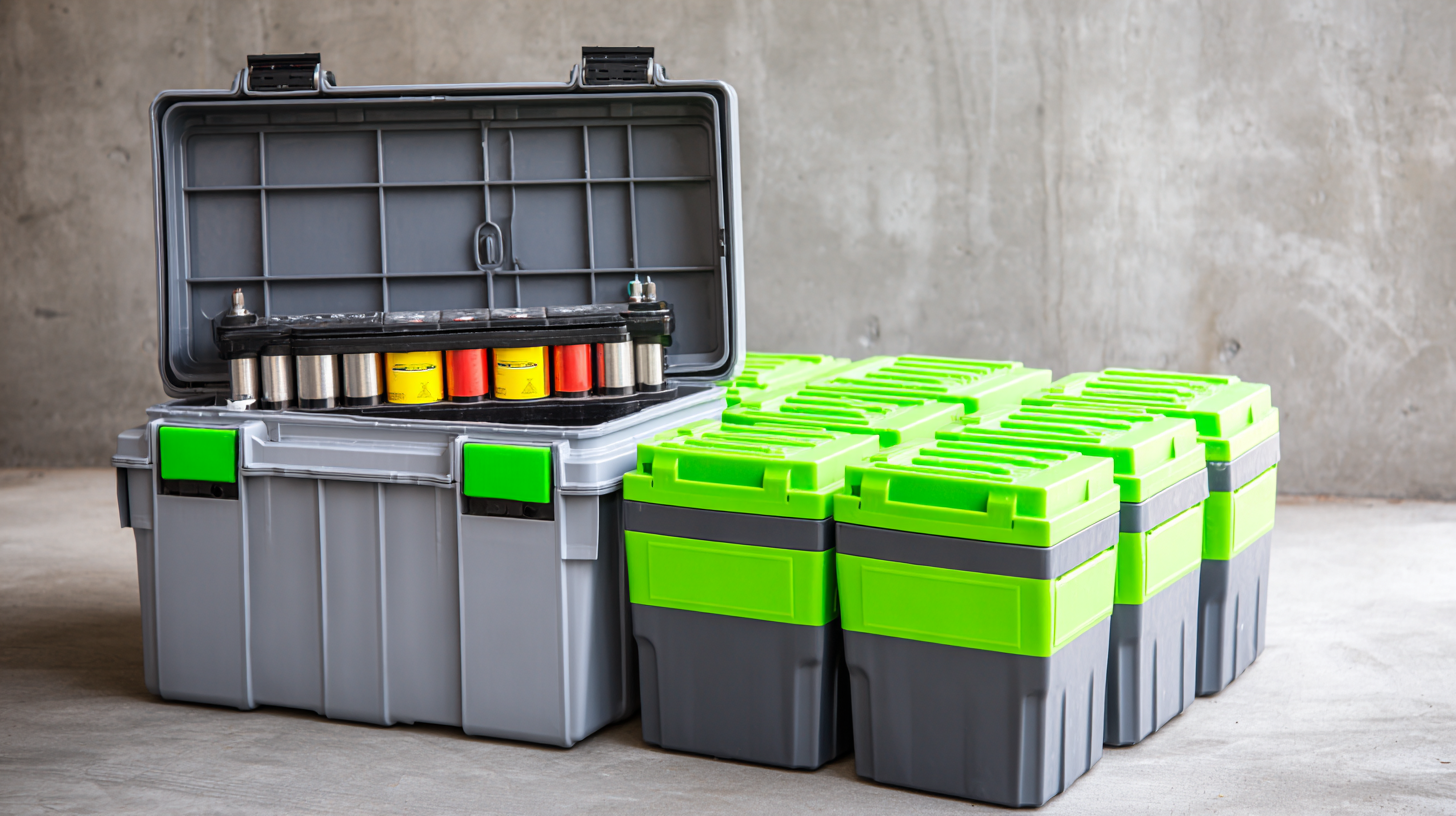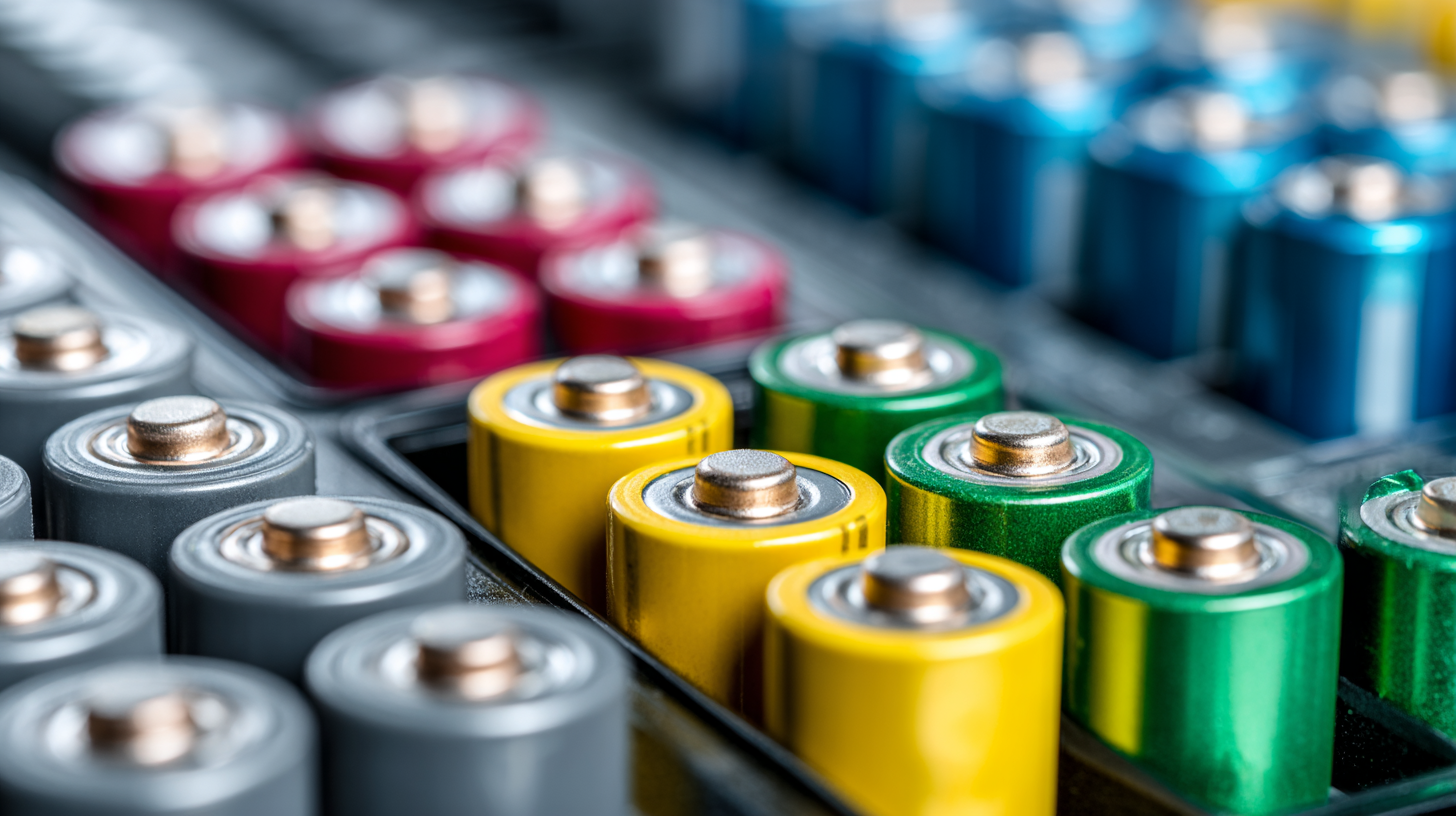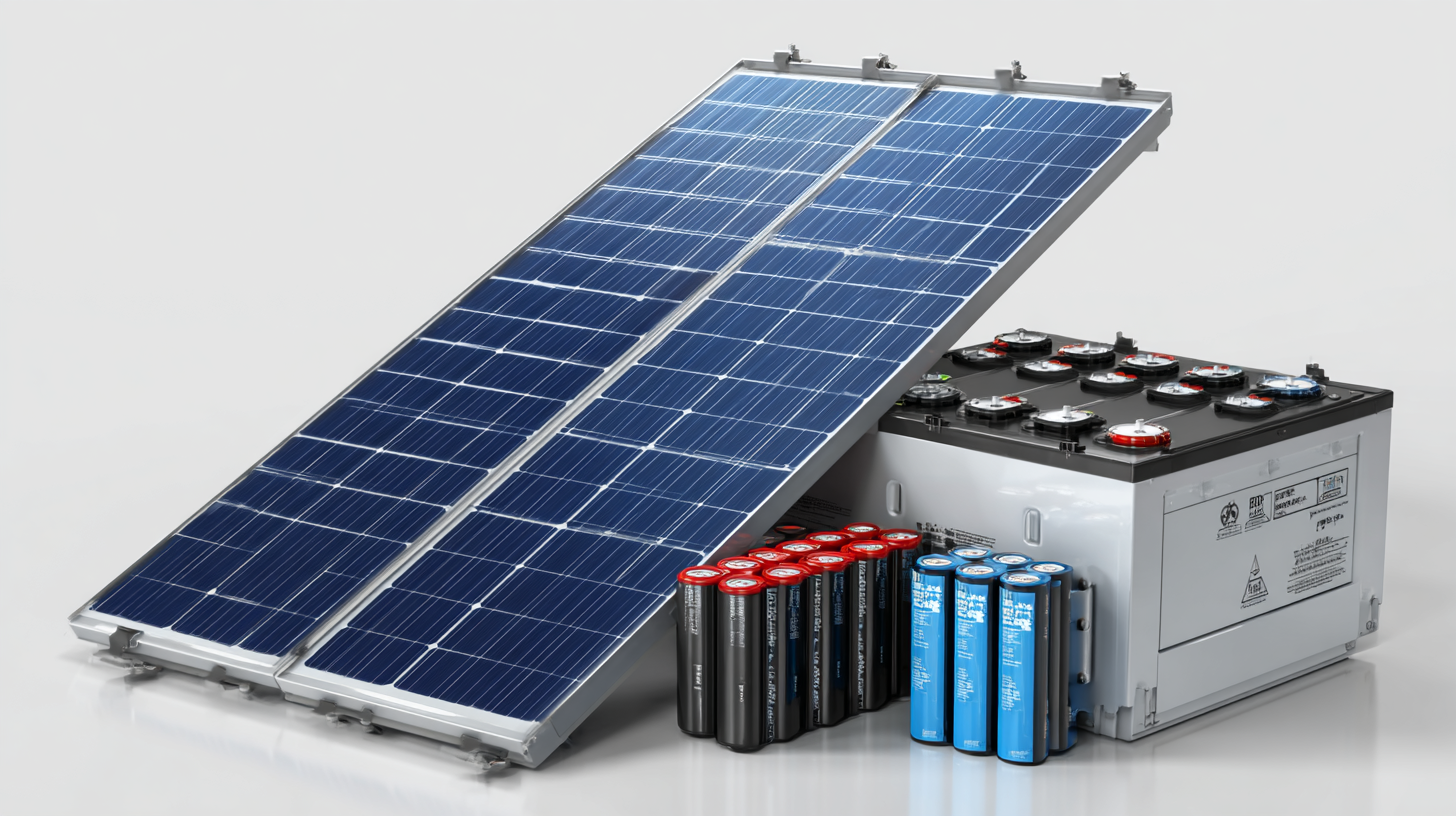ALL PRODUCTS
- Solar Panel
- Hybrid Inverter
- Lithium Battery
GSB SOLAR LITHIUM BATTERIES
- Gel Battery
- Solar Street Lights
- Pump Inverter
In recent years, the adoption of solar energy has surged, with a remarkable uptick in the use of solar batteries as homeowners seek to enhance their energy independence and reduce utility costs. According to a report by the International Energy Agency (IEA), global solar battery installations are projected to grow at an annual rate of 30% through 2025, reflecting a growing recognition of their importance in energy storage solutions. A solar battery not only stores excess energy generated during peak sunlight hours but also ensures a reliable power supply during outages and periods of low sunlight. With various options available on the market, choosing the best solar battery for your home requires careful consideration of factors such as capacity, efficiency, lifespan, and cost. This guide aims to provide essential tips and insights to help you navigate the complexities of selecting the ideal solar battery to meet your specific energy needs and contribute to a sustainable future.

When choosing the best solar battery for your home, several key factors must be considered to ensure you make an informed decision. First, evaluate the battery's capacity and power output. The capacity, typically measured in kilowatt-hours (kWh), determines how much energy the battery can store and deliver. It's essential to align this capacity with your household energy needs, especially during peak usage times. Additionally, consider the power output, which indicates how much electricity can be drawn from the battery at once. A battery with insufficient power output could limit your ability to use multiple devices simultaneously.
Another critical factor is the battery's lifespan and warranty. Solar batteries can be a significant investment, so understanding their longevity is crucial. Most solar batteries come with warranties of 5 to 15 years, and a longer warranty often indicates a more reliable and durable product. Also, take note of the battery's depth of discharge (DoD) percentage, as this figure indicates how much of the battery's total capacity can be used before recharging is needed. A higher DoD means you'll have more usable energy, enhancing the efficiency of your solar energy system.
| Feature | Description | Importance | Recommended Value |
|---|---|---|---|
| Capacity | Amount of energy the battery can store. | High | >= 10 kWh |
| Cycle Life | How many times the battery can be charged and discharged. | High | >= 3000 cycles |
| Efficiency | Percentage of energy that can be used from the stored energy. | High | >= 90% |
| Warranty | Duration of the manufacturer's guarantee. | Medium | >= 10 years |
| Size & Weight | Physical dimensions and weight of the battery. | Medium | Compact and < 100 lbs |
When choosing a solar battery for your home, understanding the different types available is crucial to maximizing your solar energy efficiency. The three most common types of solar batteries are lead-acid, lithium-ion, and saltwater batteries. According to the U.S. Department of Energy, lead-acid batteries are typically the most affordable option, making up about 80% of installed solar battery systems. However, they have a shorter lifespan and lower energy density compared to their counterparts, which may not make them the best long-term investment.
On the other hand, lithium-ion batteries have gained popularity due to their longevity and efficiency. Reports from BloombergNEF indicate that lithium-ion solutions can last over 10 years, with a round-trip efficiency of around 90%. Although they come at a higher price point, their performance can offset initial costs over time. Saltwater batteries offer an emerging alternative, being more environmentally friendly and safer, but they currently hold only a small market share due to their lower energy density. By assessing your energy needs and considering these battery types, you can make an informed decision that aligns with your home’s requirements and sustainability goals.
This chart illustrates the capacity and cycle life of various types of solar batteries commonly used in residential setups. Choosing the right battery type will depend on your energy needs and budget.
When choosing a solar battery for your home, understanding battery capacity and efficiency is essential. Battery capacity, typically measured in kilowatt-hours (kWh), indicates how much energy the battery can store. For instance, a battery with a capacity of 10 kWh can power a home for a limited duration based on its energy consumption patterns. Homeowners should evaluate their daily energy usage and select a battery that provides sufficient storage to cover their needs, especially during periods of low sunlight or power outages.
Efficiency, on the other hand, refers to how effectively a battery stores and discharges energy. It is often expressed as a percentage, highlighting the amount of energy retained after charging. A battery with 90% efficiency will only deliver 90% of the stored energy when needed. High-efficiency batteries maximize the benefits of solar energy, minimizing losses and ensuring that homeowners get the most out of their solar investment. Therefore, balancing both capacity and efficiency is crucial for optimizing solar energy storage and enhancing the overall functionality of a home solar system.

When considering the installation of a solar battery system for your home, proper planning and maintenance are crucial to ensuring optimal performance and longevity. First, assess your energy needs and the capacity of the solar battery you intend to install. Research the best locations for installation, ensuring that your system is easily accessible for maintenance while maximizing sunlight exposure. Consulting with experienced solar battery installers can provide valuable insights into the most suitable battery types and configurations for your home.
Regular maintenance of your solar battery system plays a significant role in extending its lifespan. This includes checking the connections, keeping the battery clean, and monitoring its performance through an integrated management system. Scheduling annual inspections with a qualified technician can help identify potential issues before they escalate.
Additionally, staying informed about advancements in solar technology can allow homeowners to optimize their systems over time, ensuring that they continue to benefit from energy savings and storage efficiency.
When considering the investment in solar batteries for your home, cost analysis becomes a pivotal part of the decision-making process. As of 2025, the overall expense of a home solar panel system averages around $30,000, which may seem daunting. However, various tax credits and incentives can significantly reduce your net expenditure, making solar energy systems more accessible. Understanding the financial implications, including how these incentives apply to battery purchases, can help homeowners budget effectively for this long-term investment.

In the broader context of renewable energy, particularly with the challenges faced in 2025, it's essential to evaluate not just the initial costs but also the potential savings on utility bills and the increased energy independence that comes with solar battery installation. The push for decarbonisation aims for zero-carbon energy sources by mid-century, positioning solar as a key player. This trend emphasizes the importance of integrating solar batteries into home energy systems, both for immediate cost benefits and for contributing to a more sustainable future. By analyzing these financial factors, homeowners can make informed choices that align with their financial capabilities and environmental goals.






